Graham Reid | | 3 min read
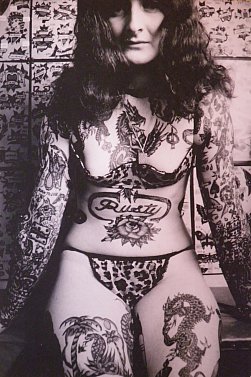
Three days before he was sentenced on firearms charges, I was looking Tame Iti directly in the eye, his stare unblinking. The room was all but empty, just my wife and me, and his was the first face I'd seen when we walked in.
Oddly enough, his familiar, assured but also rather gentle gaze seemed welcoming, given we were in the Amsterdam Tattoo Museum on the other side of the world while he, at the time, was in custody in Auckland.
But a photograph of his face with full moko – and a rather undistinguished painting of his from 1999 – took central place at a part of the museum dedicated to Maori moko.
Iti's photo, taken some 20 years ago at a guess, was beside a poster of Once Were Warriors (signed by Cliff Curtis), a truly awful embroidery of a Maori chief's head, a reproduction of Gottfried Lindauer's painting The tohunga-ta-moko at Work and a mock-up of a meeting house with carved boards.
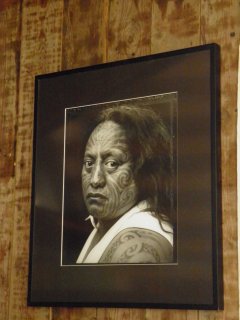 All this sounds very tacky, and
although the notes in the adjoining display cases are clumsy (“the
Maori wars” and “marai”), the display is well intentioned and
otherwise respectful.
All this sounds very tacky, and
although the notes in the adjoining display cases are clumsy (“the
Maori wars” and “marai”), the display is well intentioned and
otherwise respectful.
And quite a surprise for any New Zealander who – taking time away from Amsterdam's major attractions like the Rijksmuseum with its Rembrandts and the Van Gogh Museum – turns up at this fascinating museum of tattoo culture which is the physical coda to the life's work of famed tattooist and historian Henk Schiffmacher. Hank Panky, as he is often known, has collected over 24,000 examples of body art from around the globe and down through history.
In two historic buildings near the zoo which have been gutted and filled with display cases, large format photos, video and collections of tattoo designs and equipment, the Tattoo Museum is an unexpected and interesting digression through an alternative and very colourful history.
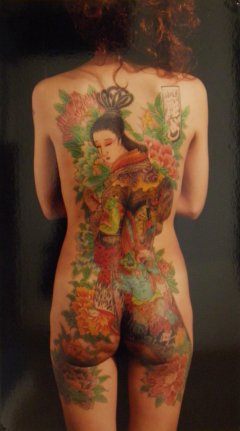 The museum opened in November 2011, has in-house tattooists should you be so moved (you
can donate your skin when you pass on), and offers a library and
study centre for the serious scholar of skin art. There's a gift shop
too. (I bought a badge which didn't hurt at all when I poked the
pointy bit through the lapel of my jacket.)
The museum opened in November 2011, has in-house tattooists should you be so moved (you
can donate your skin when you pass on), and offers a library and
study centre for the serious scholar of skin art. There's a gift shop
too. (I bought a badge which didn't hurt at all when I poked the
pointy bit through the lapel of my jacket.)
From the Iban people in Borneo (a longhouse is recreated) through Samoan pe'a and malu (male and female thigh tattoos), yakuza in Japan (a series of life-size and jaw-dropping photos of full torso tattoos on men and women) and on to rock star body art, Hank Panky has been diligent in collecting and archiving this increasingly popular form of body decoration.
Some of it is chilling (the coded markings on ferocious looking career criminals in Russian prisons) and others just look very painful, not the least in the photos of genital tattoos, a man and a woman, which are discreetly placed behind a mannequin, but still quite visible.
Important tattooists such as Bristol's Les Skuse (1912-73, voted “the Champion Tattoo Artist of All England in 1955) and his son Bill (married to Rusty Field, for years in the Guinness Book of Records as the Europe's most frequently tattooed woman) are acknowledged.
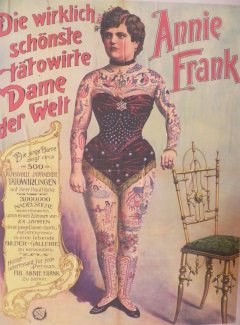 There are old posters and signage from
circuses which featured tattooed ladies, examples of artists' design
books, numerous photos of tattooed bodies (some dramatically
beautiful, others like they've been brutally attacked by a demented
child with a felt tip pen) and upstairs by the cafe are album covers
signed by big stars like Bruce Springsteen who have dropped by.
There are old posters and signage from
circuses which featured tattooed ladies, examples of artists' design
books, numerous photos of tattooed bodies (some dramatically
beautiful, others like they've been brutally attacked by a demented
child with a felt tip pen) and upstairs by the cafe are album covers
signed by big stars like Bruce Springsteen who have dropped by.
Some of the explanatory notes on the examples from tribal cultures err to the amateur ethnographic.
But the Amsterdam Tattoo Museum certainly makes for a very different afternoon out in Amsterdam, especially if you've done the refinement of Rembrandt and the vibrancy of Van Gogh.
Oddly enough, alongside the truly terrifying, head-shakingly strange and wonderfully weird, there is refinement and vibrancy here too.
Except most of it – unlike the Rembrandts and Van Goghs – looks really, really painful.

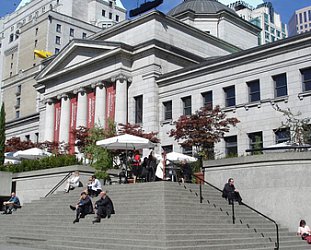

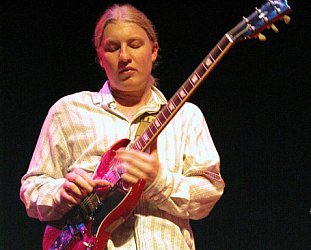
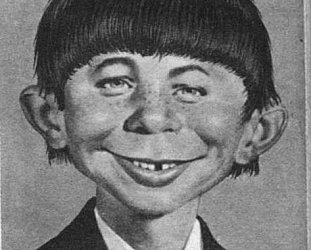
post a comment